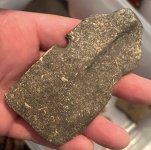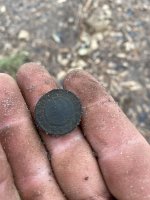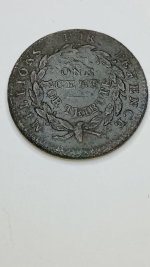piratediver
Sr. Member
Turkey and shipwrecks, what more can we say!
--------------------------------------------------------------------------------
November 26, 2008
Op-Ed Contributor
A French Connection
By KENNETH C. DAVIS
TO commemorate the arrival of the first pilgrims to America’s shores, a June date would be far more appropriate, accompanied perhaps by coq au vin and a nice Bordeaux. After all, the first European arrivals seeking religious freedom in the “New World” were French. And they beat their English counterparts by 50 years. That French settlers bested the Mayflower Pilgrims may surprise Americans raised on our foundational myth, but the record is clear.
Long before the Pilgrims sailed in 1620, another group of dissident Christians sought a haven in which to worship freely. These French Calvinists, or Huguenots, hoped to escape the sectarian fighting between Catholics and Protestants that had bloodied France since 1560.
Landing in balmy Florida in June of 1564, at what a French explorer had earlier named the River of May (now the St. Johns River near Jacksonville), the French émigrés promptly held a service of “thanksgiving.” Carrying the seeds of a new colony, they also brought cannons to fortify the small, wooden enclosure they named Fort Caroline, in honor of their king, Charles IX.
In short order, these French pilgrims built houses, a mill and bakery, and apparently even managed to press some grapes into a few casks of wine. At first, relationships with the local Timucuans were friendly, and some of the French settlers took native wives and soon acquired the habit of smoking a certain local “herb.” Food, wine, women — and tobacco by the sea, no less. A veritable Gallic paradise.
Except, that is, to the Spanish, who had other visions for the New World. In 1565, King Philip II of Spain issued orders to “hang and burn the Lutherans” (then a Spanish catchall term for Protestants) and dispatched Adm. Pedro Menéndez to wipe out these French heretics who had taken up residence on land claimed by the Spanish — and who also had an annoying habit of attacking Spanish treasure ships as they sailed by.
Leading this holy war with a crusader’s fervor, Menéndez established St. Augustine and ordered what local boosters claim is the first parish Mass celebrated in the future United States. Then he engineered a murderous assault on Fort Caroline, in which most of the French settlers were massacred. Menéndez had many of the survivors strung up under a sign that read, “I do this not as to Frenchmen but as to heretics.” A few weeks later, he ordered the execution of more than 300 French shipwreck survivors at a site just south of St. Augustine, now marked by an inconspicuous national monument called Fort Matanzas, from the Spanish word for “slaughters.”
With this, America’s first pilgrims disappeared from the pages of history. Casualties of Europe’s murderous religious wars, they fell victim to Anglophile historians who erased their existence as readily as they demoted the Spanish settlement of St. Augustine to second-class status behind the later English colonies in Jamestown and Plymouth.
But the truth cannot be so easily buried. Although overlooked, a brutal first chapter had been written in the most untidy history of a “Christian nation.” And the sectarian violence and hatred that ended with the deaths of a few hundred Huguenots in 1565 would be replayed often in early America, the supposed haven for religious dissent, which in fact tolerated next to none.
Starting with those massacred French pilgrims, the saga of the nation’s birth and growth is often a bloodstained one, filled with religious animosities. In Boston, for instance, the Puritan fathers banned Catholic priests and executed several Quakers between 1659 and 1661. Cotton Mather, the famed Puritan cleric, led the war cries against New England’s Abenaki “savages” who had learned their prayers from the French Jesuits. The colony of Georgia was established in 1732 as a buffer between the Protestant English colonies and the Spanish missions of Florida; its original charter banned Catholics. The bitter rivalry between Catholic France and Protestant England carried on for most of a century, giving rise to anti-Catholic laws, while a mistrust of Canada’s French Catholics helped fire many patriots’ passion for independence. As late as 1844, Philadelphia’s anti-Catholic “Bible Riots” took the lives of more than a dozen people.
The list goes on. Our history is littered with bleak tableaus that show what happens when righteous certitude is mixed with fearful ignorance. Which is why this Thanksgiving, as we express gratitude for America’s bounty and promise, we would do well to reflect on all our histories, including a forgotten French one that began on Florida’s shores so many years ago.
Kenneth C. Davis is the author of “America’s Hidden History: Untold Tales of the First Pilgrims, Fighting Women and Forgotten Founders Who Shaped a Nation.”
Happy Thanksgiving,
Pirate Diver
--------------------------------------------------------------------------------
November 26, 2008
Op-Ed Contributor
A French Connection
By KENNETH C. DAVIS
TO commemorate the arrival of the first pilgrims to America’s shores, a June date would be far more appropriate, accompanied perhaps by coq au vin and a nice Bordeaux. After all, the first European arrivals seeking religious freedom in the “New World” were French. And they beat their English counterparts by 50 years. That French settlers bested the Mayflower Pilgrims may surprise Americans raised on our foundational myth, but the record is clear.
Long before the Pilgrims sailed in 1620, another group of dissident Christians sought a haven in which to worship freely. These French Calvinists, or Huguenots, hoped to escape the sectarian fighting between Catholics and Protestants that had bloodied France since 1560.
Landing in balmy Florida in June of 1564, at what a French explorer had earlier named the River of May (now the St. Johns River near Jacksonville), the French émigrés promptly held a service of “thanksgiving.” Carrying the seeds of a new colony, they also brought cannons to fortify the small, wooden enclosure they named Fort Caroline, in honor of their king, Charles IX.
In short order, these French pilgrims built houses, a mill and bakery, and apparently even managed to press some grapes into a few casks of wine. At first, relationships with the local Timucuans were friendly, and some of the French settlers took native wives and soon acquired the habit of smoking a certain local “herb.” Food, wine, women — and tobacco by the sea, no less. A veritable Gallic paradise.
Except, that is, to the Spanish, who had other visions for the New World. In 1565, King Philip II of Spain issued orders to “hang and burn the Lutherans” (then a Spanish catchall term for Protestants) and dispatched Adm. Pedro Menéndez to wipe out these French heretics who had taken up residence on land claimed by the Spanish — and who also had an annoying habit of attacking Spanish treasure ships as they sailed by.
Leading this holy war with a crusader’s fervor, Menéndez established St. Augustine and ordered what local boosters claim is the first parish Mass celebrated in the future United States. Then he engineered a murderous assault on Fort Caroline, in which most of the French settlers were massacred. Menéndez had many of the survivors strung up under a sign that read, “I do this not as to Frenchmen but as to heretics.” A few weeks later, he ordered the execution of more than 300 French shipwreck survivors at a site just south of St. Augustine, now marked by an inconspicuous national monument called Fort Matanzas, from the Spanish word for “slaughters.”
With this, America’s first pilgrims disappeared from the pages of history. Casualties of Europe’s murderous religious wars, they fell victim to Anglophile historians who erased their existence as readily as they demoted the Spanish settlement of St. Augustine to second-class status behind the later English colonies in Jamestown and Plymouth.
But the truth cannot be so easily buried. Although overlooked, a brutal first chapter had been written in the most untidy history of a “Christian nation.” And the sectarian violence and hatred that ended with the deaths of a few hundred Huguenots in 1565 would be replayed often in early America, the supposed haven for religious dissent, which in fact tolerated next to none.
Starting with those massacred French pilgrims, the saga of the nation’s birth and growth is often a bloodstained one, filled with religious animosities. In Boston, for instance, the Puritan fathers banned Catholic priests and executed several Quakers between 1659 and 1661. Cotton Mather, the famed Puritan cleric, led the war cries against New England’s Abenaki “savages” who had learned their prayers from the French Jesuits. The colony of Georgia was established in 1732 as a buffer between the Protestant English colonies and the Spanish missions of Florida; its original charter banned Catholics. The bitter rivalry between Catholic France and Protestant England carried on for most of a century, giving rise to anti-Catholic laws, while a mistrust of Canada’s French Catholics helped fire many patriots’ passion for independence. As late as 1844, Philadelphia’s anti-Catholic “Bible Riots” took the lives of more than a dozen people.
The list goes on. Our history is littered with bleak tableaus that show what happens when righteous certitude is mixed with fearful ignorance. Which is why this Thanksgiving, as we express gratitude for America’s bounty and promise, we would do well to reflect on all our histories, including a forgotten French one that began on Florida’s shores so many years ago.
Kenneth C. Davis is the author of “America’s Hidden History: Untold Tales of the First Pilgrims, Fighting Women and Forgotten Founders Who Shaped a Nation.”
Happy Thanksgiving,
Pirate Diver




 . First you say "we as americans believe in god" and then secondly state that you are free to believe whatever you want. Its a contradiction in terms to apply both statements to "americans" - its a game of words
. First you say "we as americans believe in god" and then secondly state that you are free to believe whatever you want. Its a contradiction in terms to apply both statements to "americans" - its a game of words 


